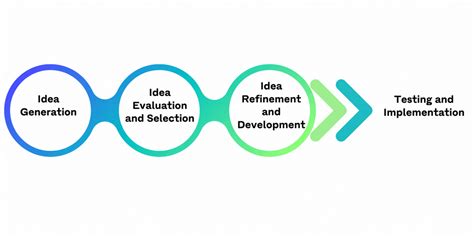Introduction

In a world bursting with information and endless possibilities, cultivating big ideas has become paramount. They serve as the driving force behind transformative products, services, and societal advancements. This article delves into the multifaceted realm of idea generation, providing guidance and inspiration for unleashing your own ideas and driving them to fruition.
The Importance of Big Ideas
According to the World Economic Forum, by 2025, 50% of all existing jobs will be automated. This staggering statistic underscores the urgent need to develop new ideas and skills that will remain valuable in the future workplace.
Big ideas not only have the potential to revolutionize industries but also to positively impact our lives and the world around us. From life-saving medical advancements to sustainable energy solutions, history has witnessed the transformative power of big ideas.
The Idea-Generating Process
Ideation is an iterative process that involves brainstorming, research, and refinement. Here are some key steps to follow:
- Brainstorming: Identify a problem or opportunity that you’re passionate about solving. Engage in free-flowing brainstorming sessions, generating as many ideas as possible.
- Research: Conduct thorough research to gather information relevant to your ideas. This could include market analysis, competitor analysis, and scientific studies.
- Ideate: Use the information gathered from your research to refine and develop your ideas. Consider their feasibility, potential impact, and uniqueness.
- Refine: Test your ideas through prototyping, user feedback, or small-scale experiments. Seek constructive criticism and iterate upon your ideas to improve their effectiveness.
Breaking the Idea Block
Encountering idea blocks is a common challenge in the ideation process. However, there are effective techniques to overcome these obstacles:
- Change your environment: Step away from your usual workspace and explore new settings that may inspire creativity, such as nature, a library, or a coffee shop.
- Freewrite: Engage in stream-of-consciousness writing, jotting down any thoughts or ideas that come to mind without judgment.
- Mind Mapping: Create a visual representation of your thoughts and ideas, connecting them through lines or branches. This helps you explore different perspectives and identify potential connections.
- Practice “Mindful Meander”: Engage in activities that stimulate creativity, such as reading, listening to music, or taking a walk. Allow your mind to wander and make unexpected connections.
Common Mistakes to Avoid
- Fear of failure: Don’t let the fear of failure hold you back from pursuing your ideas. Remember, setbacks are an integral part of the innovation process.
- Perfectionism: Avoid getting caught up in the details at the early stages of ideation. Focus on generating as many ideas as possible without striving for perfection.
- Lack of due diligence: Conduct thorough research to validate your ideas and ensure their feasibility. Avoid relying solely on gut instinct or hearsay.
- Not seeking feedback: Share your ideas with others and seek constructive criticism. Feedback can help you refine your ideas and identify potential blind spots.
Table 1: Techniques for Breaking Idea Blocks
| Technique | Description |
|---|---|
| Change of environment | Explore new settings to stimulate creativity. |
| Freewriting | Write down any thoughts or ideas without judgment. |
| Mind Mapping | Create a visual representation of your thoughts and ideas. |
| Mindful Meander | Engage in activities that stimulate creativity and allow your mind to wander. |
Table 2: Benefits of Big Ideas
| Benefit | Result |
|---|---|
| Innovation | Revolutionary products, services, and societal advancements. |
| Problem-solving | Solutions to pressing challenges or unmet needs. |
| Economic Growth | Job creation, increased productivity, and economic prosperity. |
| Social Impact | Improvements in healthcare, education, and other areas that impact well-being. |
Ideaprenuer: A New Word for Idea Generators
Merging the concepts of “idea” and “entrepreneur,” I propose the term “ideaprenuer” to describe individuals who excel in generating and commercializing new ideas. Like entrepreneurs, ideapreneurs possess a combination of creativity, business acumen, and the ability to turn their ideas into viable ventures.
Conclusion
Cultivating big ideas is an essential skill for navigating the rapidly changing world of the 21st century. Through brainstorming, research, and refinement, you can unleash your ideas and drive them to fruition. Embrace the challenge of overcoming idea blocks, avoid common pitfalls, and seek out feedback to enhance your ideas. By becoming an ideaprenuer, you can make a meaningful impact on the world and leave a lasting legacy of innovation and problem-solving.
Additional Resources
- The Idea Generator
- 10 Ways to Generate Big Ideas That Change the World
- The 7-Step Idea Generation Process That Will Make You More Creative
